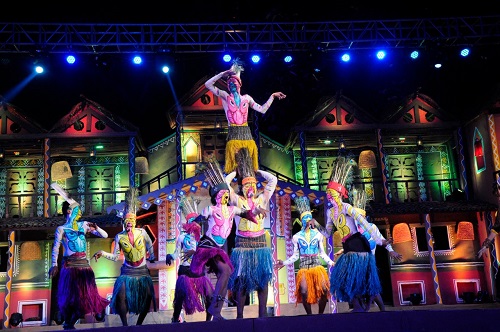

|
About sahriya Swang
Dance
Living amidst the forest in symphony with the ways
of nature, the Sahariyas are the last remaining
tribes of Rajasthan. This group of self-sufficient
people has lived all their lives without the use of
modern day implements and speaks a local dialect
called Haroti that is influenced by the languages of
Hindi and Braj. The tribe possesses rich cultural
traditions a paradigm of which is the Swang Dance -
literally implying dance drama. It is an open air
performance conducted by a group of about a dozen
people and involves mimicry, acting, dialogues,
songs, and dance. Sequenced episodes of drama are
punctuated by the singing of season specific folk
songs like Langhuria, Fag, and Rasia to the
accompaniment of Harmonium, Dholki, Nagri, Ginghra,
and Majhira. Swang Nritya is commonly performed at
the time of the festival of colors – ‘Holi’ and
unique to it is the use of pronounced body painting
and masks. The tribal history is brought forth
beautifully in the strokes of vibrant colors on the
faces and bodies of the artists and traditional
headgear and costumes made from things garnered from
the forest are also used. Members of the audience
are addressed in calling out to them and making them
a part of the performance adding to its energy,
vibrance and collective revely. Themes are largely
religious and mythological; for example, folk tales
of Lord Rama and Tejaji are recounted and the tone
of the performance is celebratory. The contemporary
form of this theatre has secular themes as well and
during the course of one performance, several themes
can be brought about one after the other. Also,
activism and health programs now employ the
theatre-form to spread awareness about social issues
like child marriage, women’s rights, the need for
education etc. and about prenatal care and deadly
diseases like AIDS.
|

